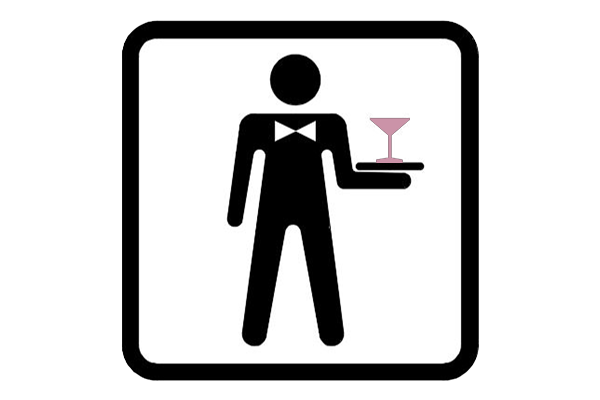This concept refers to the importance of taking care that a particular moment in the routine, typically in the climax, display a clear image that sums up the experience by having the elements arranged in the scene in such way that a maximum information of the nature and the conditions of the effect that just took place is provided. It helps that the magical effect to be more intelligible, memorable and overall enhances the quality of the experience.
Different names have been used to refer to this, such a “Photo finish”, but “the Waiter Theory” is Gabi’s favorite way to refer to this, it is named after a particular technique waiters use, at least in Spain, to quickly calculate the bill that is due in a table without looking at their notes. A competent waiter just by looking at what is left on the table is able to reconstruct the order, for example, two empty bottles, a glass, a mug and two plates with some leftovers… he can also take advantage of the relative position of the elements with the clients at the table to remember who ordered what if needed on the fly (for instance if there is some misunderstanding about the bill). A waiter may delay a bit cleaning a table to be able to do this, but also can use this technique when the table as already been cleared by accessing to that mental picture of the objects on the table.
In magic this concept is extremely useful and most of the time opportunities of adding value are lost without any compensation, just by pure ignorance. The most typical example is the routine in which the spectator cuts the pack in four piles and on top of each and ace is to be found (spectator cuts the aces”, in this particular routine, regardless of the method, the aces have to be displayed face up crowning each of the piles.
See Gabi performing this sequence as the opener of his “Clandestine Aces”
Is common to see the climax of this kind of routine with that image distorted, like having the four aces together and the deck spread out on the table at that point, and it is distorted because it doesn’t accurately describes what happened, rather than the ”the four aces appeared”. Any other configurations significantly different than the one described will be detrimental if one is looking for memorability. If a method prevents you to reach to this position most likely it should be discarded.
This works the same for virtually every magic routine in which the visual aspect is relevant… from the ambitious card, to the cups and balls or the Zig Zag Girl.
Talking about how this image is constructed, is has to be integral to the developing of the routine, you have to arrive to there, it as to build it self during routine, it is not use to rearrange the elements in the last moment to try to get that effect. That notion the magician creating an image from the scratch every performance, like a painter facing a white canvas, is very relevant and is incorporated to the never ending list of things that a competent magician should consider while doing magic (purely technical aspects, effective communication, showmanship, audience management, body expression, rhythm and cadence, right dosing of information, effectively using silence and pauses to maximize effects…)
Here you have Gabi himself talking about his theory in the context of his take on Steve Freeman’s routine.
To close this little article, this concept also works in reverse… for better or worse… so if you don’t want something to be remembered (if you are a magician this should ring the bell) be careful that things don’t leave a clear and memorable image or any trail or clue… in that case… clean the table right away!!

